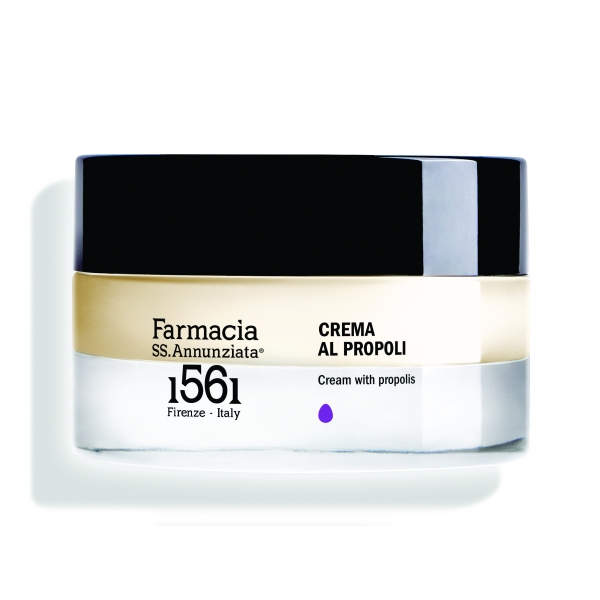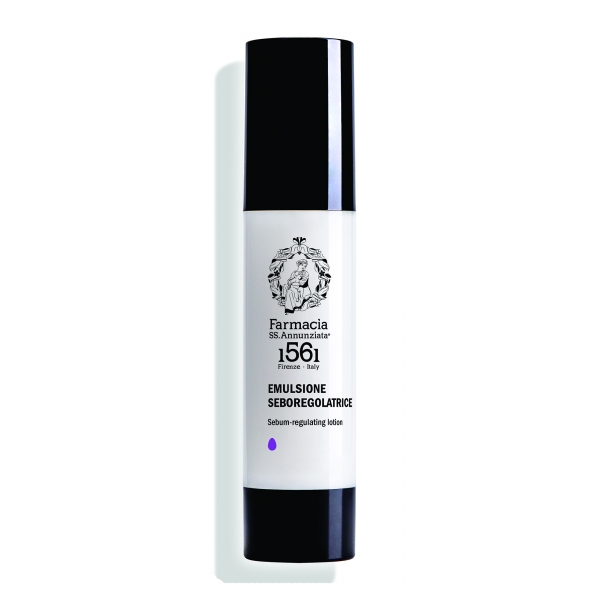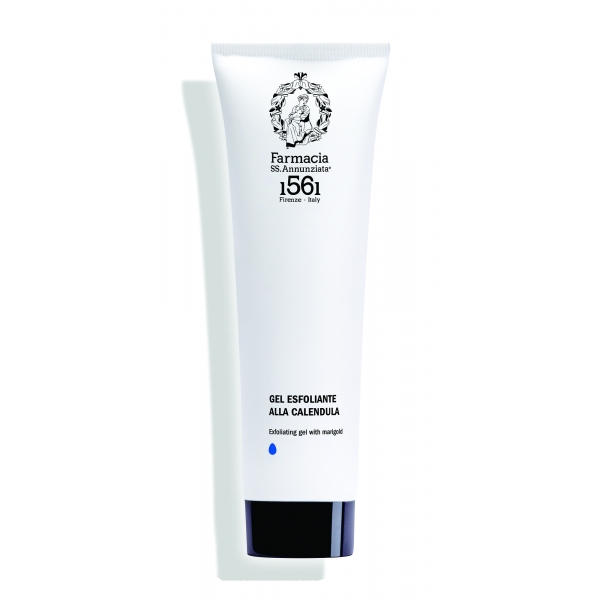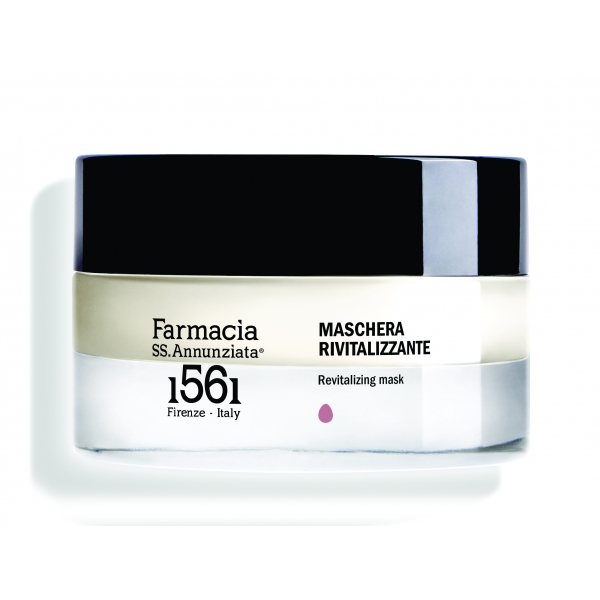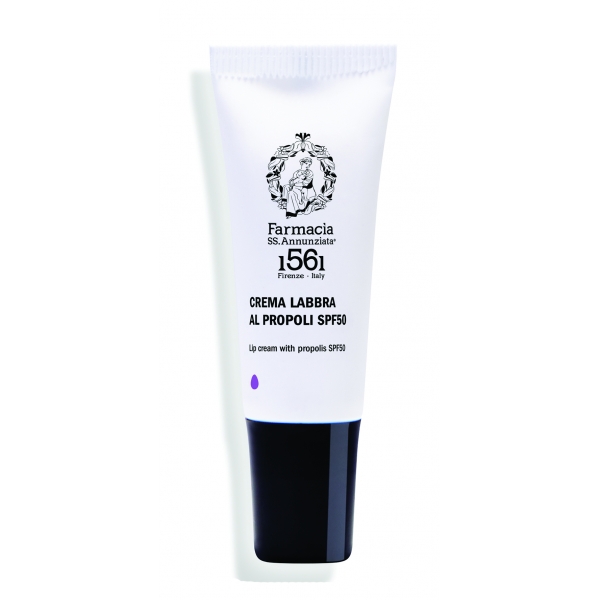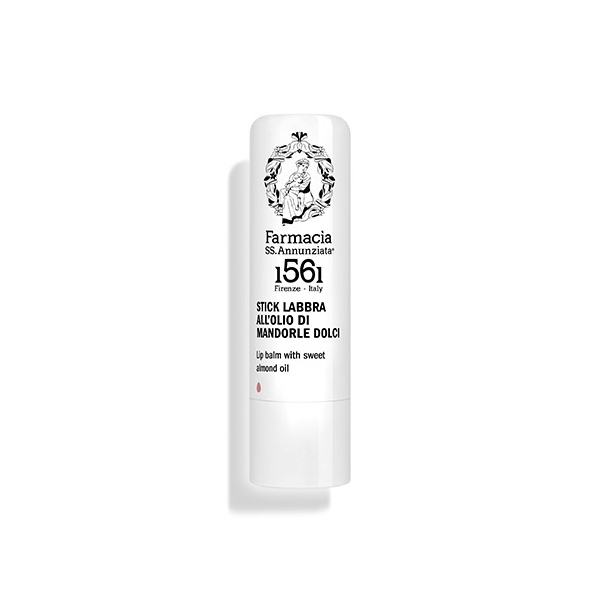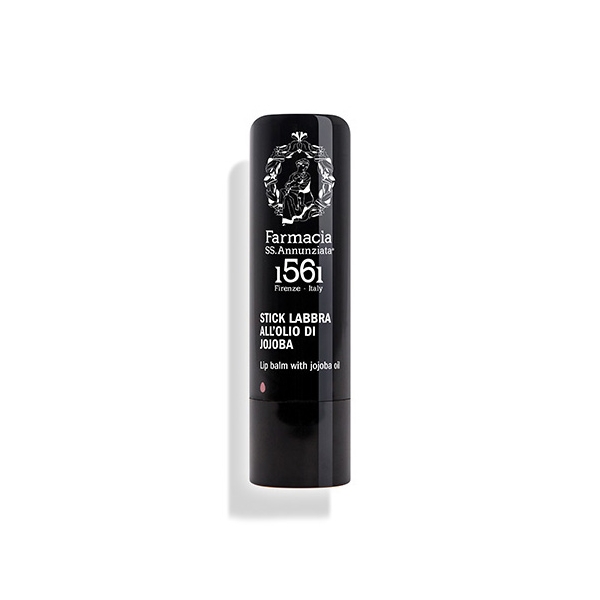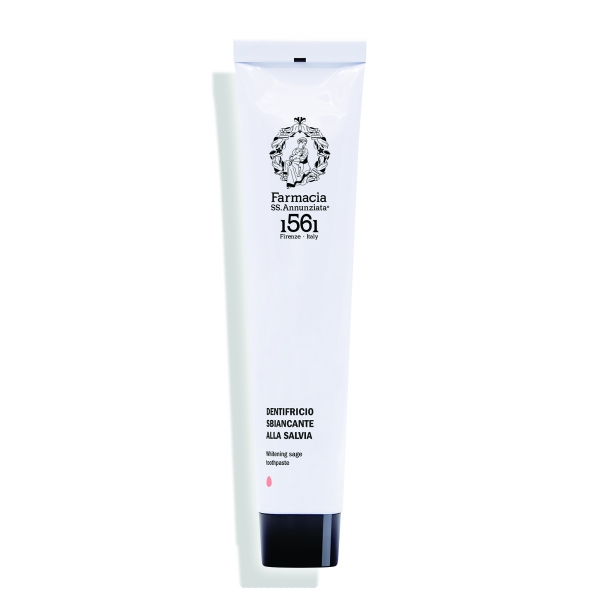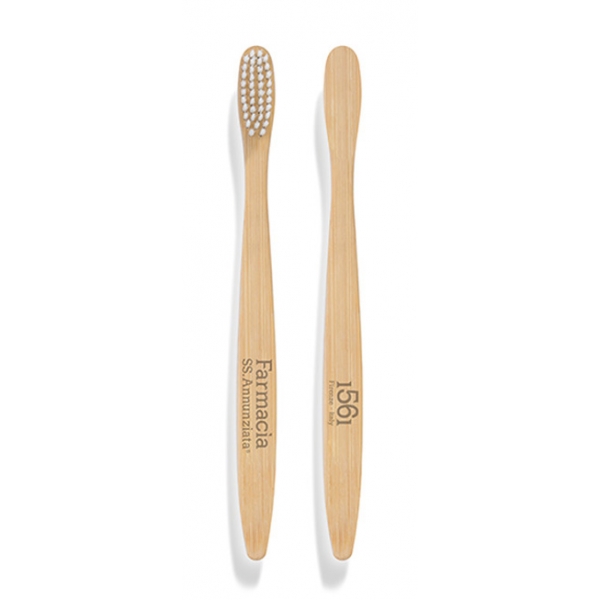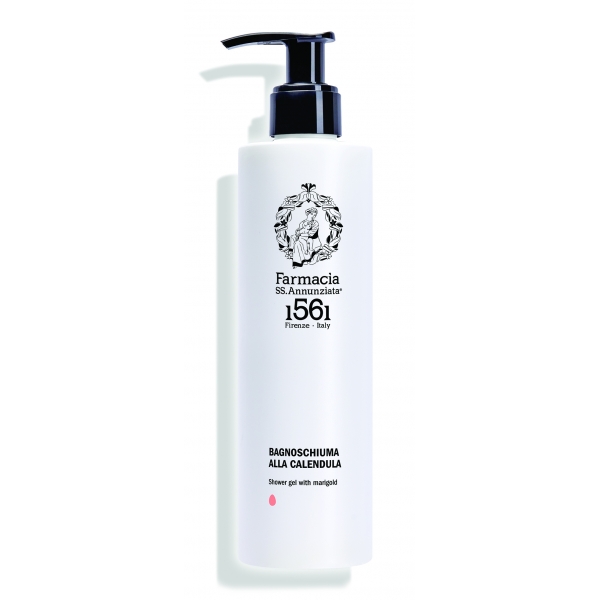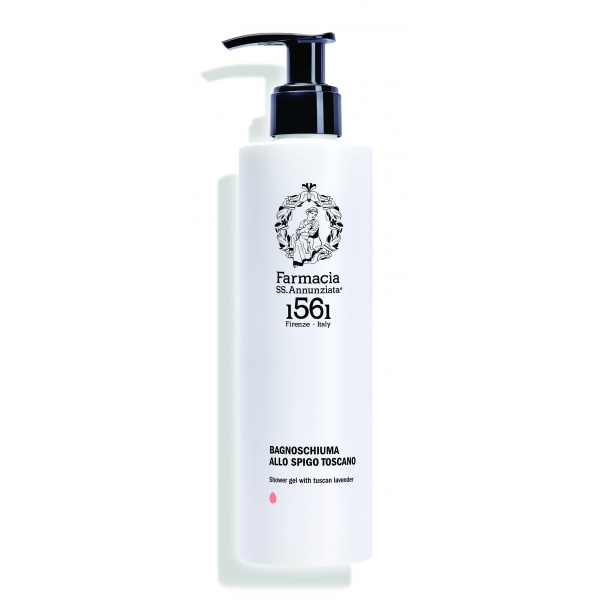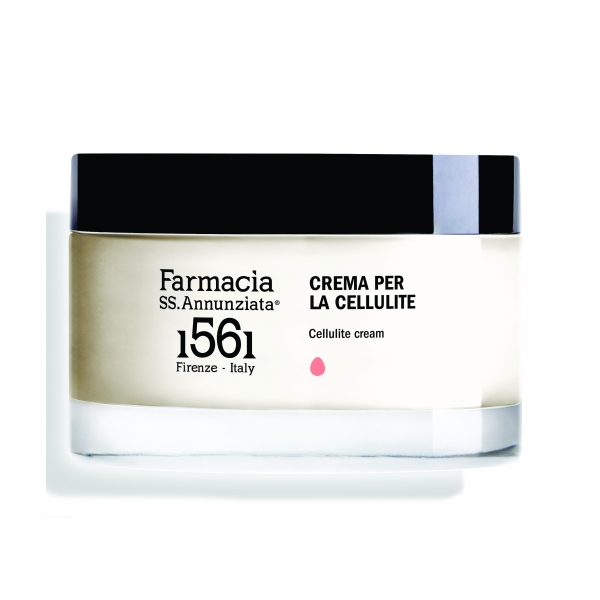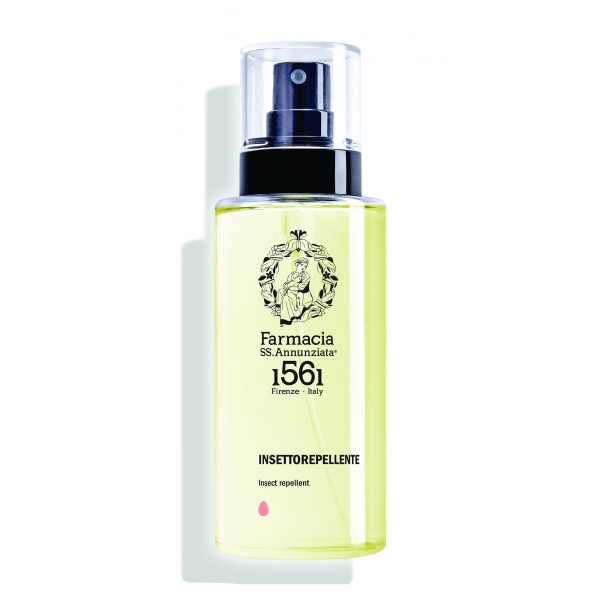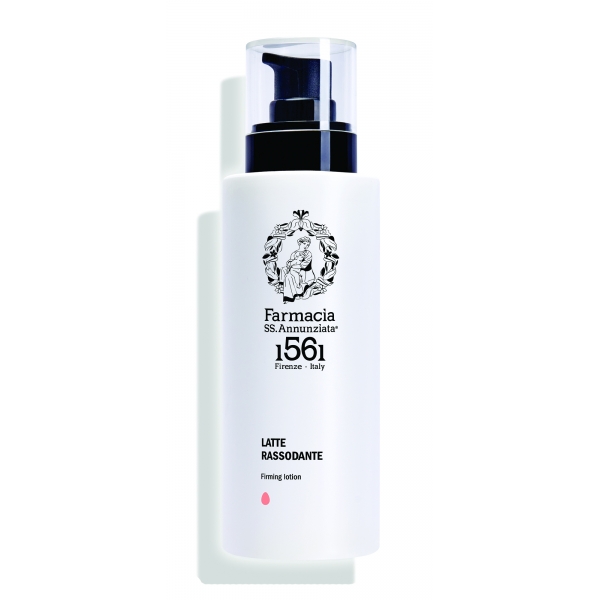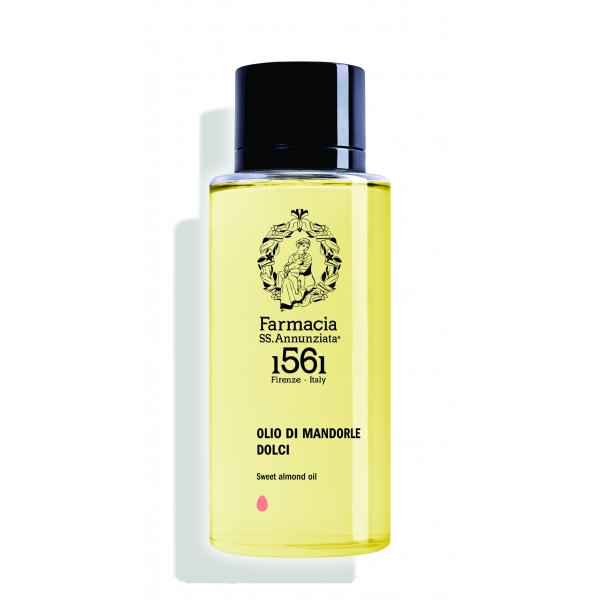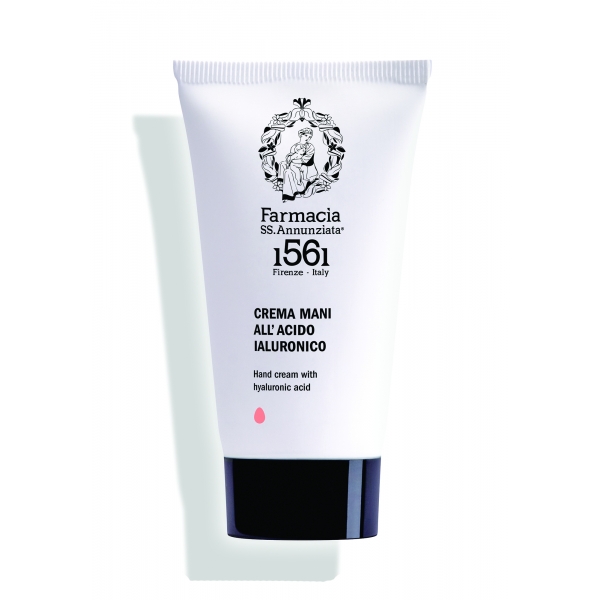No products
Categories
- Fashion Accessories
- Clothing
- Beauty & Lifestyle
-
Hi-Tech & Lifestyle
- Gaming
-
Case
- iPhone 11 Pro
- iPhone 11 Pro Max
- iPhone 11
- iPhone X / XS
- iPhone XS Max
- Samsung S10 / S10+ / S10e
- Huawei P30 / P30 Pro / P30 Lite
- Huawei P20 / P20 Pro / P20 Lite
- iPhone XR
- Samsung S9
- Samsung S9+
- iPhone 8 / 7
- iPhone 8 Plus / 7 Plus
- Samsung S8
- Samsung S8+
- Samsung S7
- Samsung S7 Edge
- iPhone 6 / 6 s
- iPhone 6 Plus / 6 s Plus
- iPhone 5 / SE
- Skin
- Audio
- Smart Home
- Drones & Hoverboard
- Photo & Video
- Desk Supplies
- Accessories
- Games
- Beverages
- Food
- Home
- Jewelry
- Luxury
- Travel
- Art
- Footwear
- Vintage Fashion
- Restaurants
- Sport
- Animals
- Gift Ideas
- Kidswear
Extra
Farmacia SS. Annunziata 1561
None of The Old Traditions have Been Lost. None of The Benefits of Modern Technology have Been Neglected
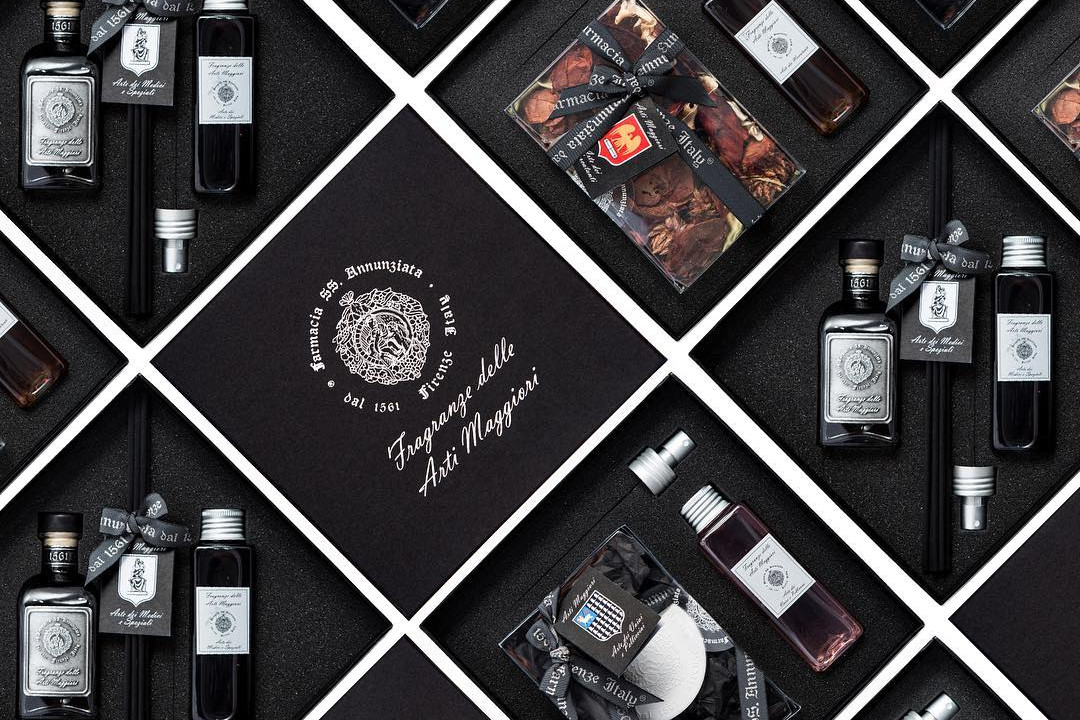
Concept
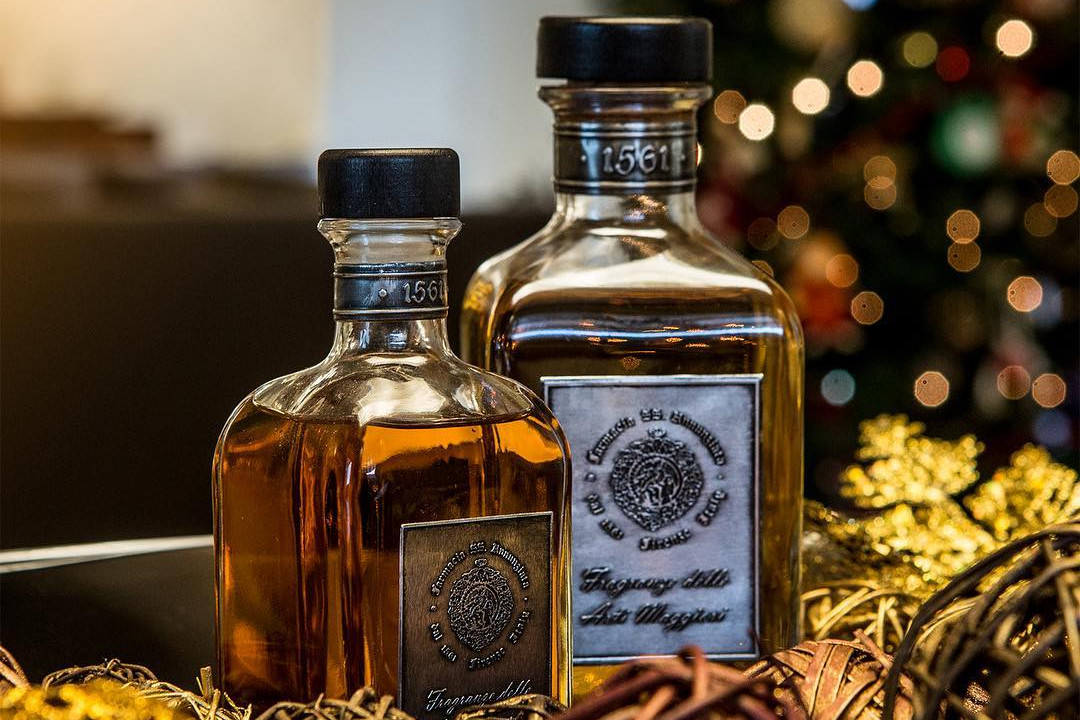
In 1561 the chemist Domenico di Vincenzo di Domenico Brunetti was the first manager of the Santissima Annunziata Pharmacy about whom we have information. (A.S.F. – Decima Granducale 3784 cc. 110v. – 111r A.S.F. – Arte dei Medici e Speziali, 12, c.123v.).

Since that time the Farmacia Santissima Annunziata has always mantained, apart from the usual prestige typical of every pharmacy at that age, a special tradition in preparing galenic prescriptions and products for hygiene and the beauty of the skin.
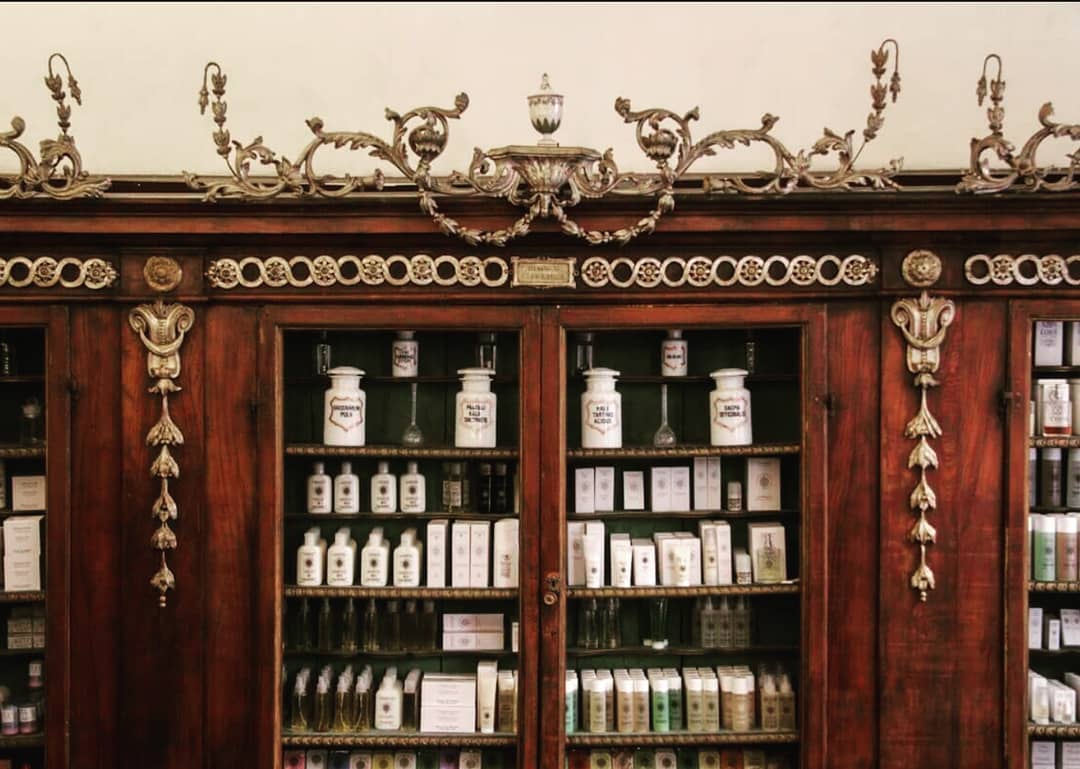
We have graduated, from ancient processes completely handmade, with pestle and mortar, to special quality controlled preparations made with modern and safe machinery, giving special attention to high standards and throughly researching our prescriptions which are made both with traditional and new raw products.

Our ancient tradition has been mantained and the standards of our products have become, if possible, better and safer.
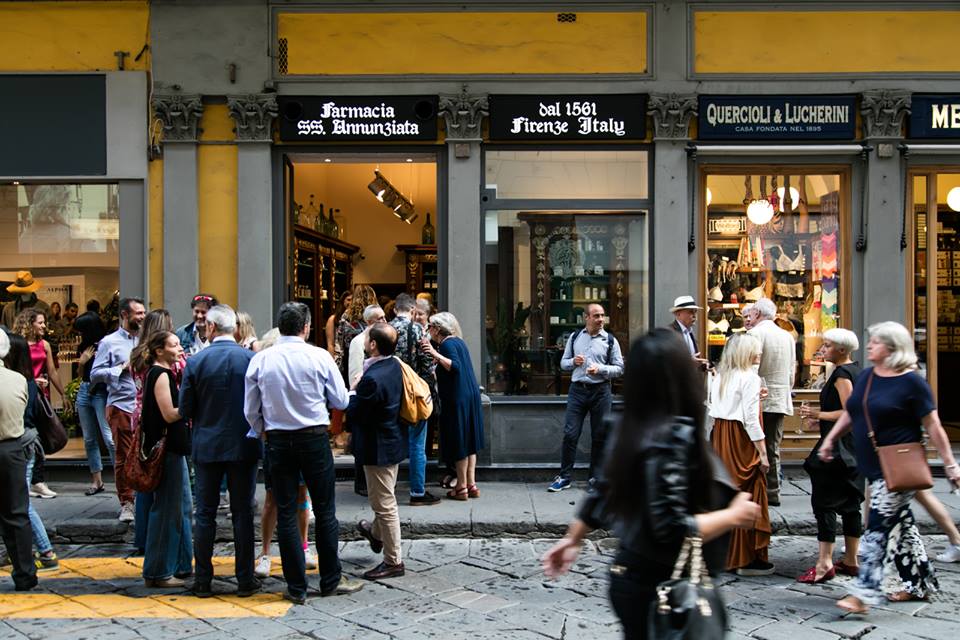
The Farmacia SS. Annunziata uses only the highest quality ingredients available on the global market and preparation is done with precision using advanced, high-tech machinery. The finished product is always fresh and in accordance with all current technical and legislative standards and the psychophysical needs of the client, as well as the needs of the skin according to the climate and/or seasonal changes, are always carefully considered in the making of both new and old products.
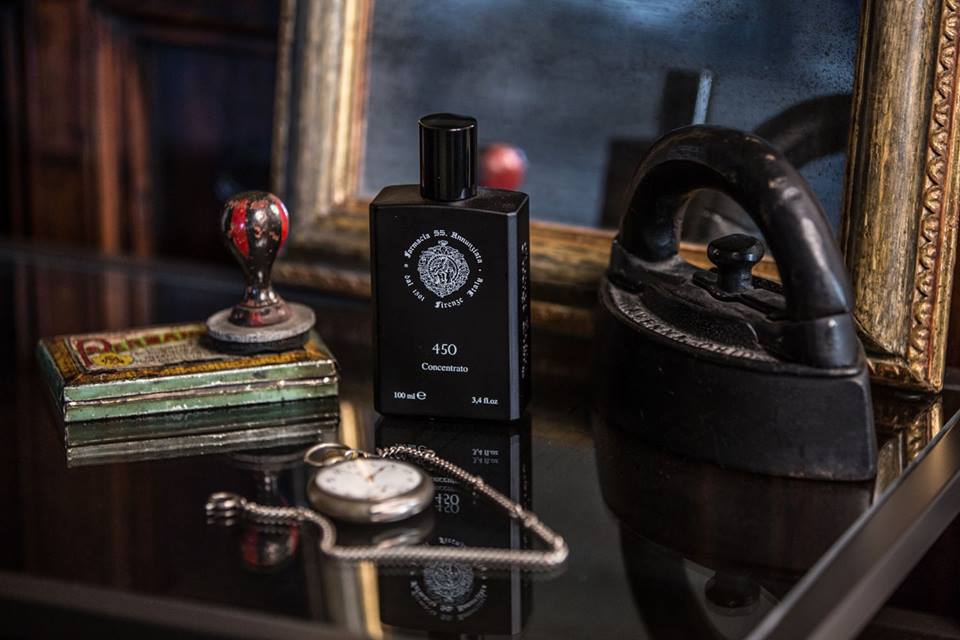
History
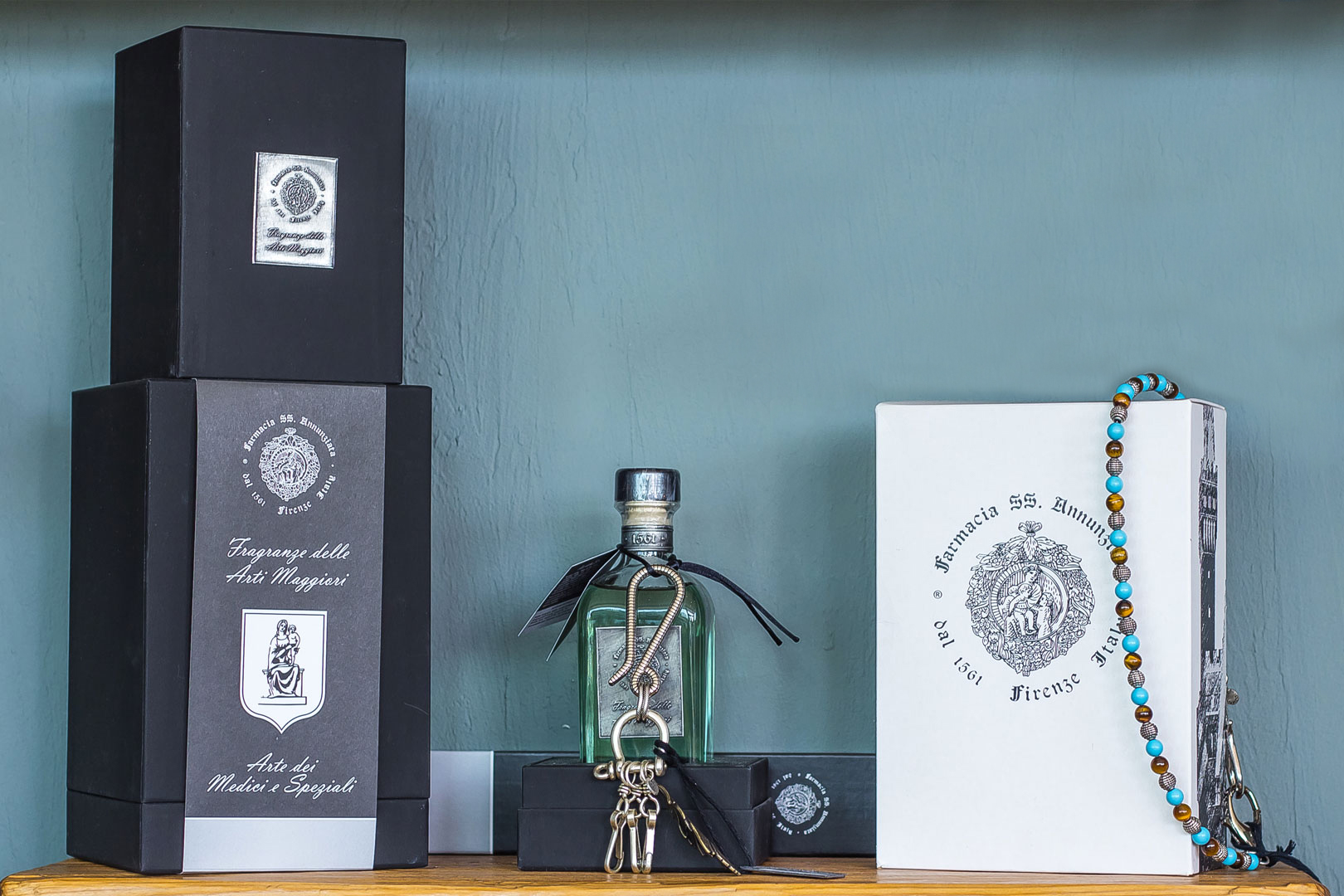
The Farmacia SS. Annunziata of Florence is located at Via dei Servi 30 (black) and 80 (red) in a building that dates back to 1400.
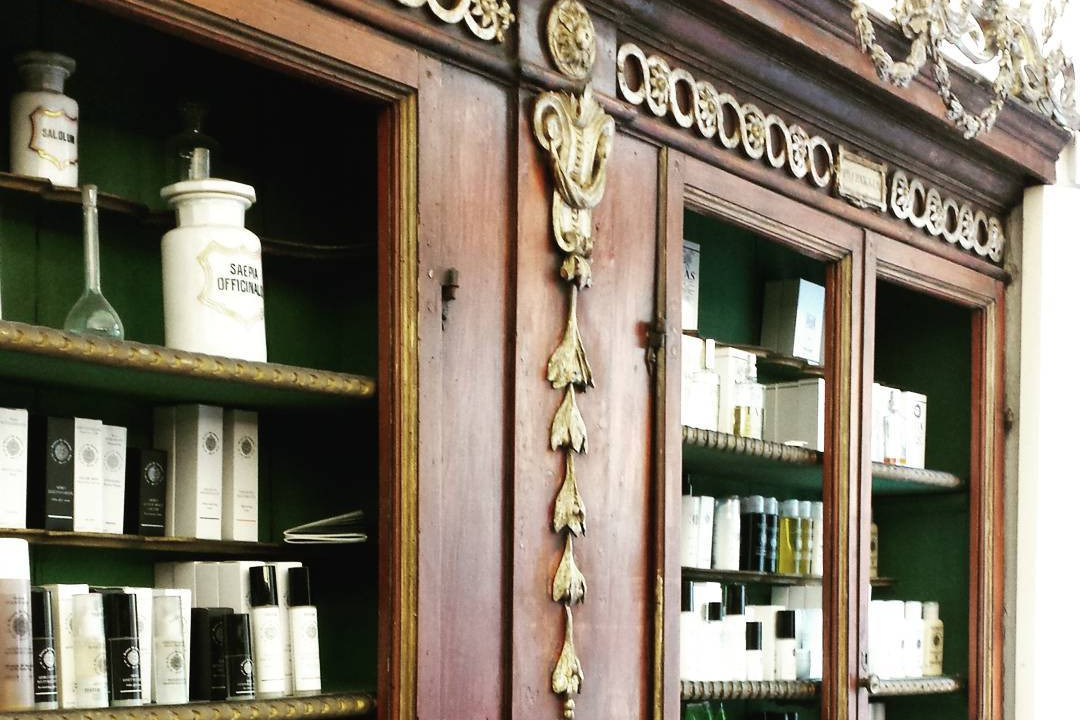
At the top of the first story facade is a pietra serena stone sculpture of an eagle bearing a ball on its back. The history of this coat of arms dates back to 1200.Between the twelfth and thirteenth centuries, the Arti di Firenze (Guilds of Florence), which were guilds of arts and crafts, began to take shape.
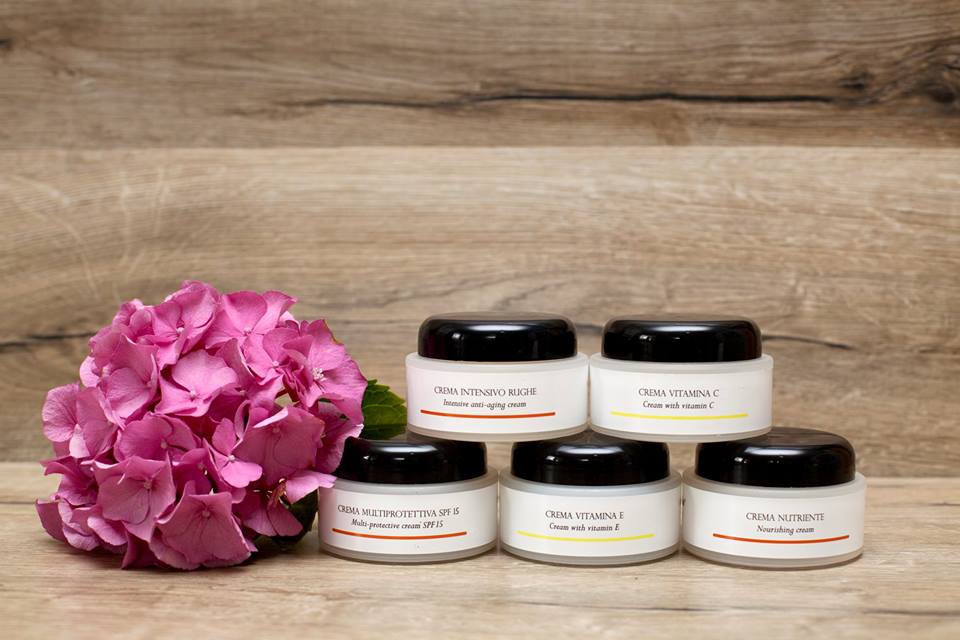
These were initially created as lay associations for the defence and pursuit of common goals that brought together those who worked in the same profession or those who practised the same trade.
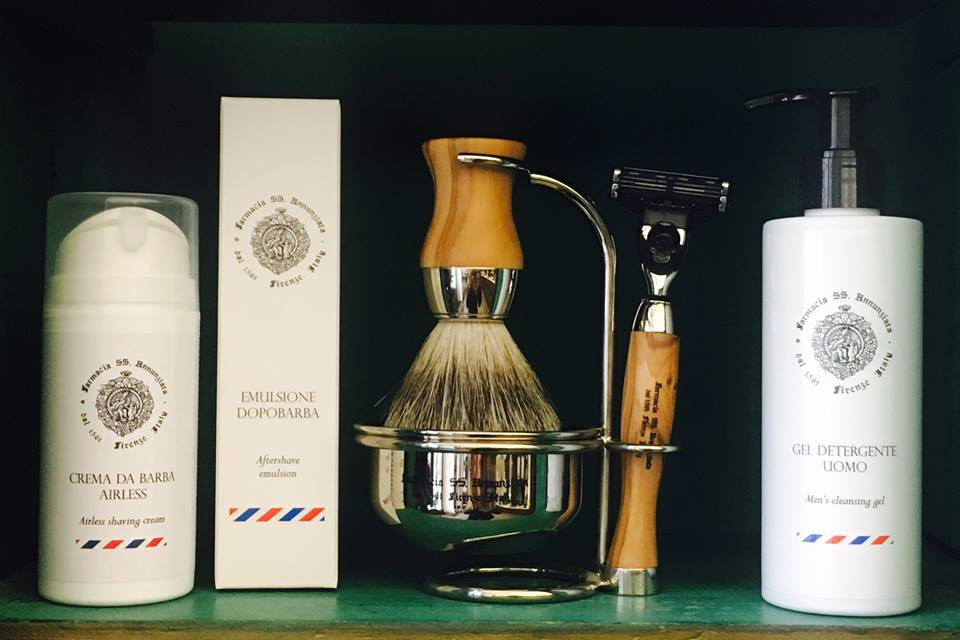
The extraordinary economic developments that permitted Florence to become one of the richest and most powerful cities in medieval Europe are owed in large part to these guilds.
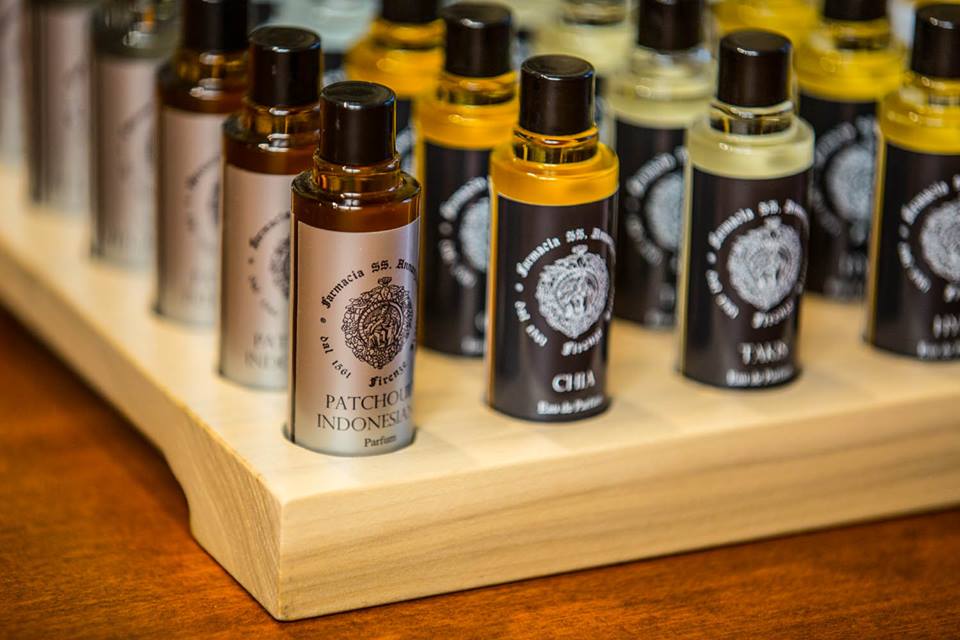
Seven guilds called the Arti Maggiori (Major Guilds) and another fourteen called the Arti Minori (Minor Guilds) were formed.Those belonging to the former managed and administered large interests and were able to create commercial and financial relationships in many parts of the world.
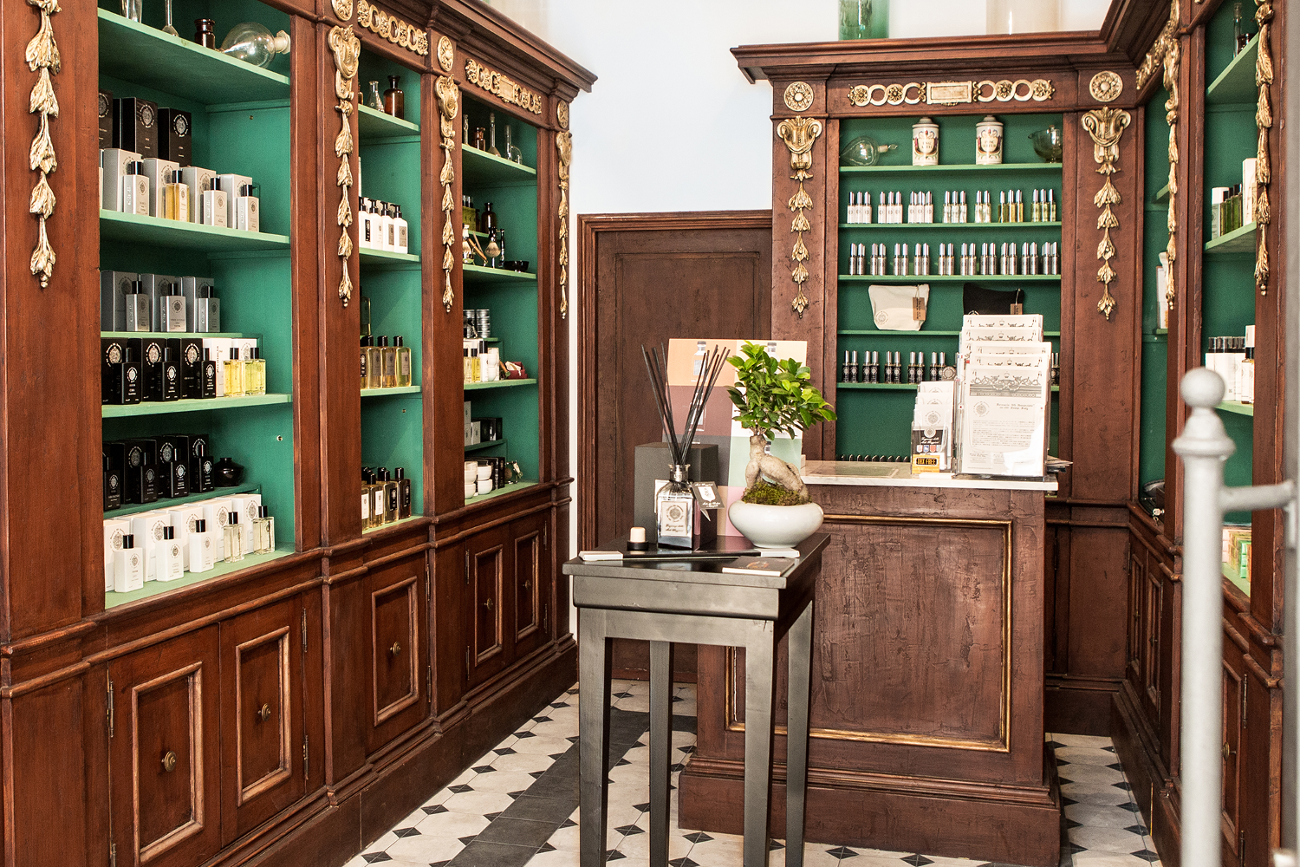
The Arti Minori were guilds of a purely artisan character. Their services were limited to a local sphere and their involvement in politics was generally far more restricted than that of the Arti Maggiori.
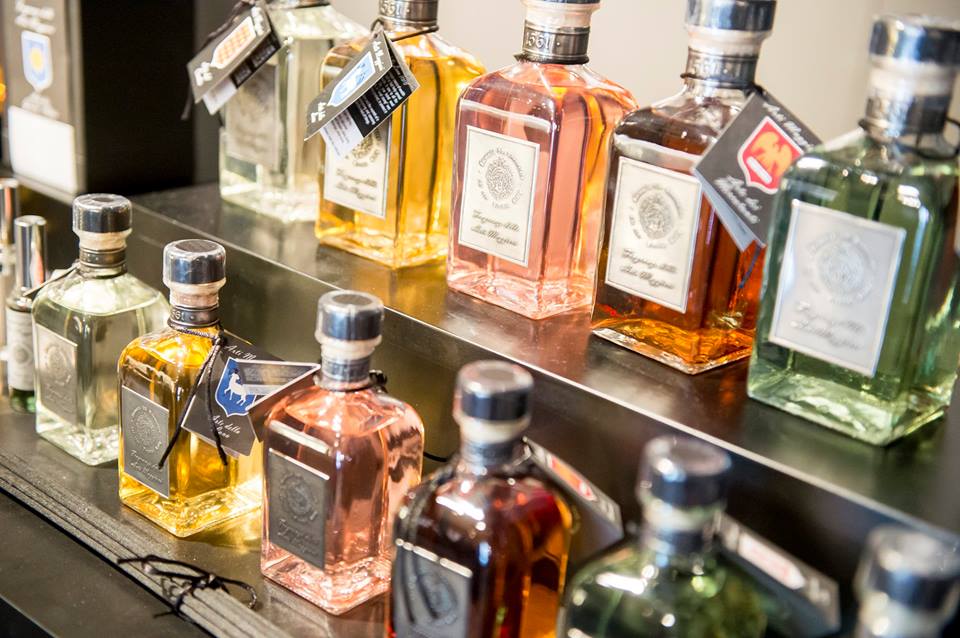
One of the richest and most powerful of the Arti Maggiori guilds in Florence was the Arte dei Mercatanti or di Calimala (a guild of cloth finishers and merchants) who had shops in Via Calimala in the centre of Florence, where many of the various guilds’ shops were located.
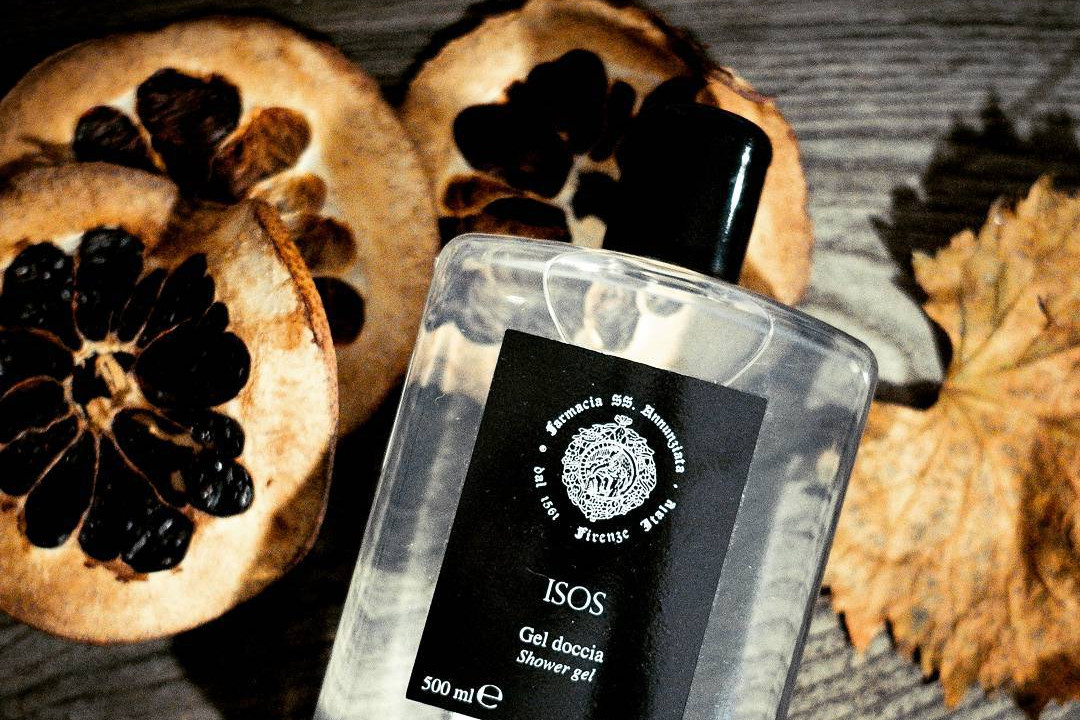
The Arte dei Mercatanti imported cloth mainly from France and England and then dyed, stretched and fulled it before re-exporting it to other countries.

The Arte dei Mercatanti is represented by a golden eagle against a red background standing upon a white bundle of cloth.
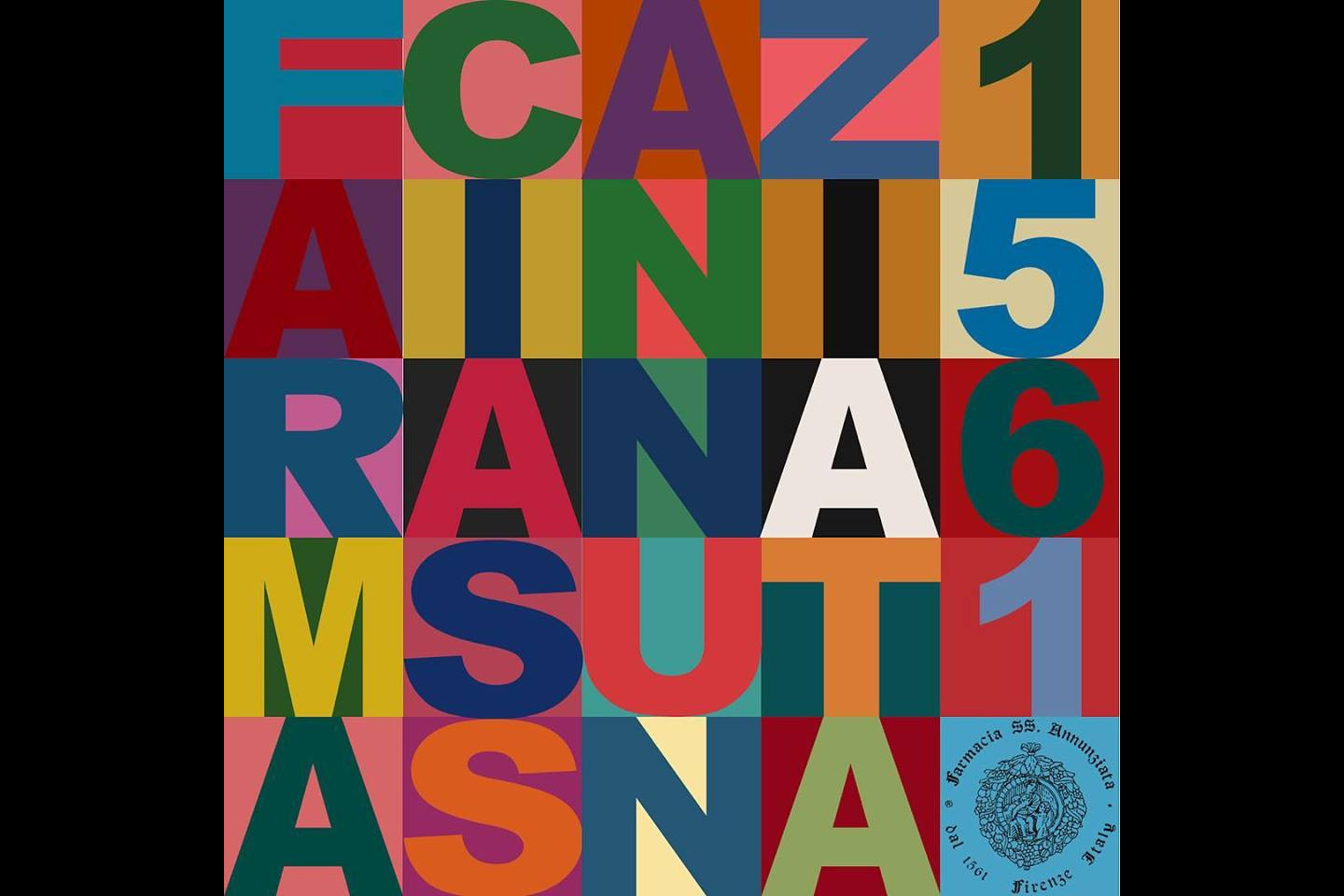
This symbol can be found on the inside of its original building situated on top of a large ball that is hoisted above the stairwell. It is the same coat of arms that is sculpted on the facade of the building where the Farmacia SS. Annunziata is located.
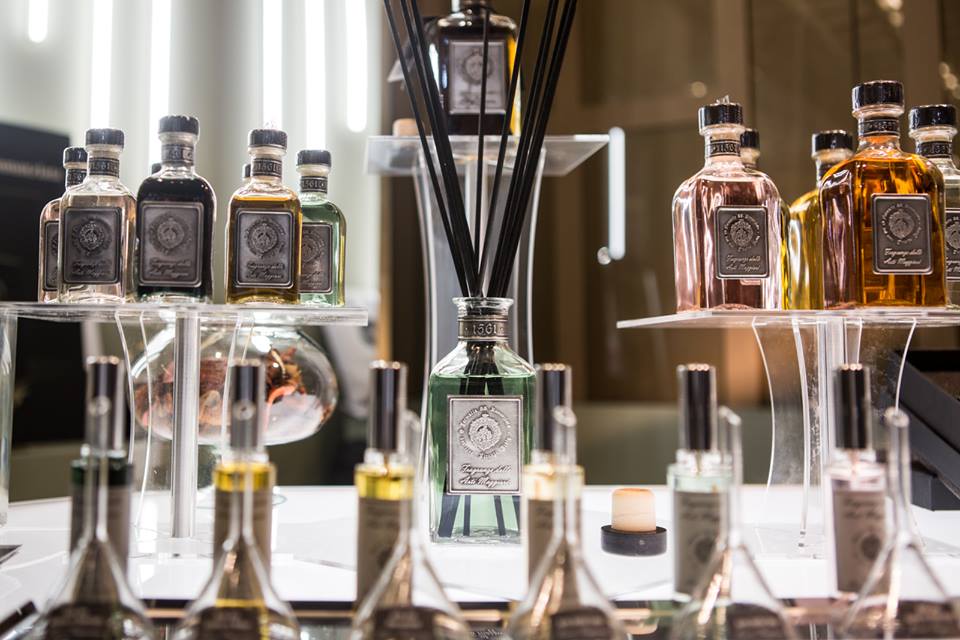
In 1298 the city began to urbanize. It was during this time that a street was formed that went directly to the area in front of the new church that was connected to the SS Annunziata Convent. Today this street is called Via dei Servi.
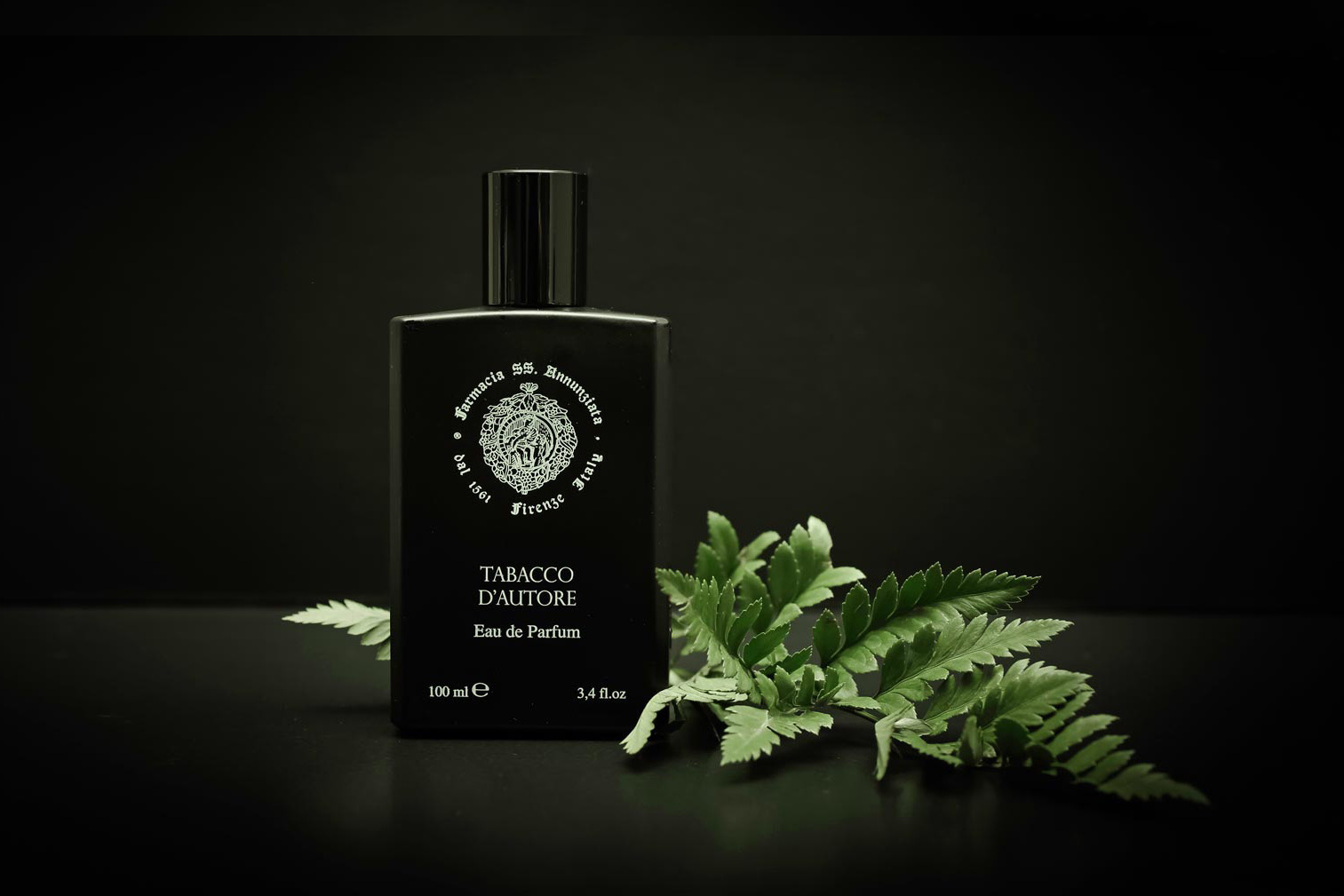
In 1419, Fillipo Brunelleschi began work on the loggia of the Ospedale degli Innocenti (Hospital of the Innocents) and in 1421 Via dei Servi was paved.

At some point between 1471 and 1482, a map was drawn up by an anonymous connoisseur of Florentine wares and artefacts that clearly shows a two-storey unitary building located between the Annunziata and the Duomo. This building could represent the houses of Via dei Servi and not the original tiratoio (the building for the stretching and drying of cloth). Two-thirds of the original tiratoio was inherited by the Arte della Lana (Guild of Silk), and the Arte dei Mercatanti inherited the remaining one-third.
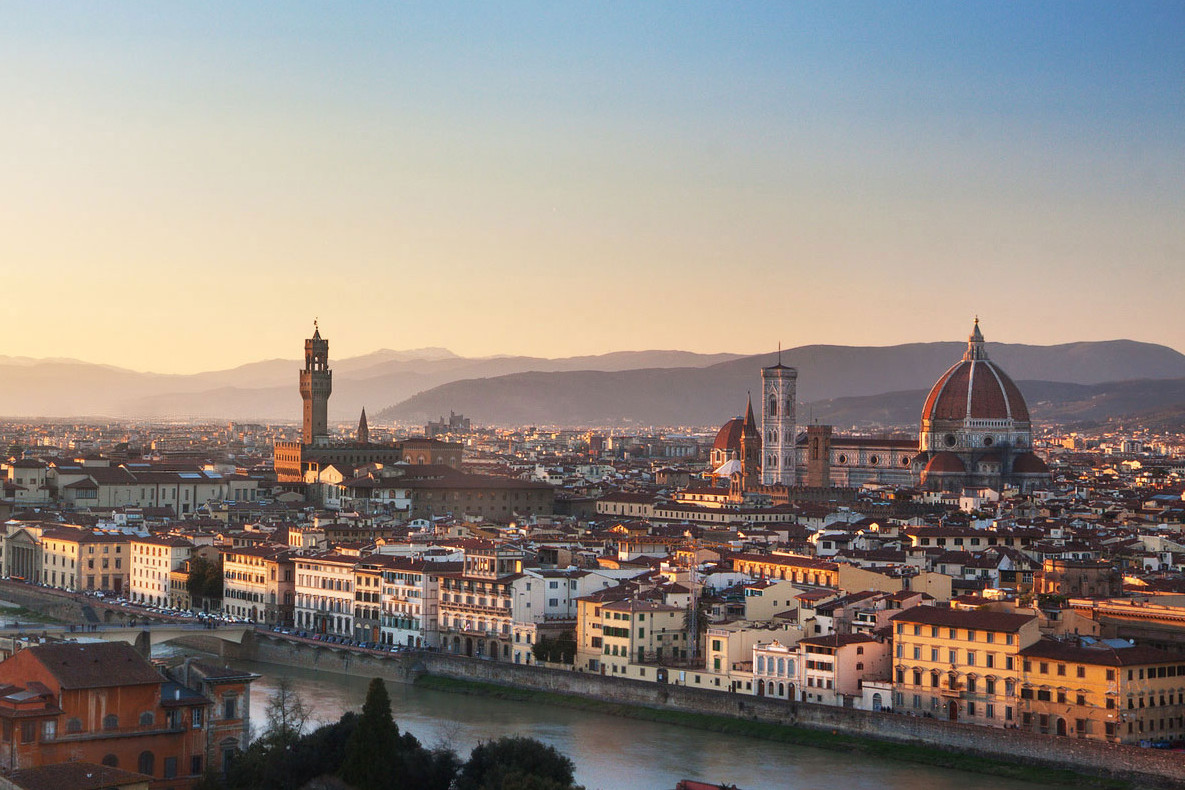
The tiratoio was eventually demolished by both guilds and it is believed that they may have then built 13 houses (9 and 4, respectively) as evidenced by the positioning of the coat of arms of each guild. The building in which the pharmacy is located is amongst those built by the Arte dei Mercatanti di Calimala, as shown by the coat of arms on the building.
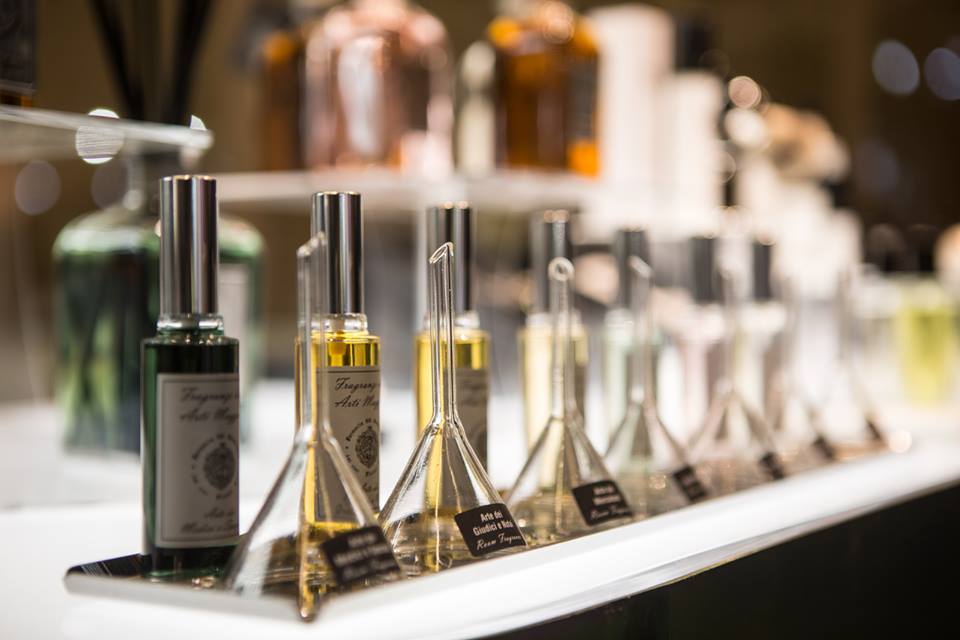
The Decima Granducale of 1561 is the first document that evidences the existence of the 13 houses. This document is a written land registry in which can be found the diligently noted names of owners and tenants along with any existing mortgages etc.
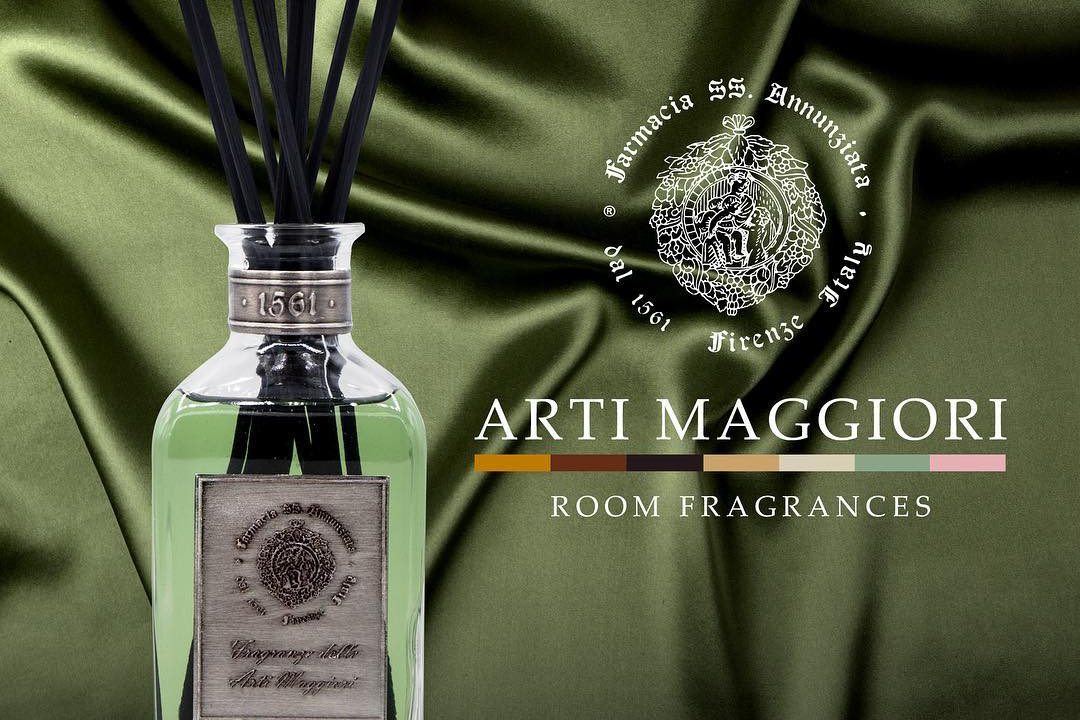
One of the volumes of the Decima, entitled Ricerca delle Botteghe a Firenze dell’anno 1561 (Research of the Florentine Shops from the year 1561), shows that a chemist’s shop existed on the second stretch of Via dei Servi which was the property of the Monache di S. Niccolò (Sisters of Saint Nicholas) and that was managed by the Domenico di Vincenzo Brunetti Apothecary (ASF, Decima Granducale 3784, cc. 110v. – 111r.).
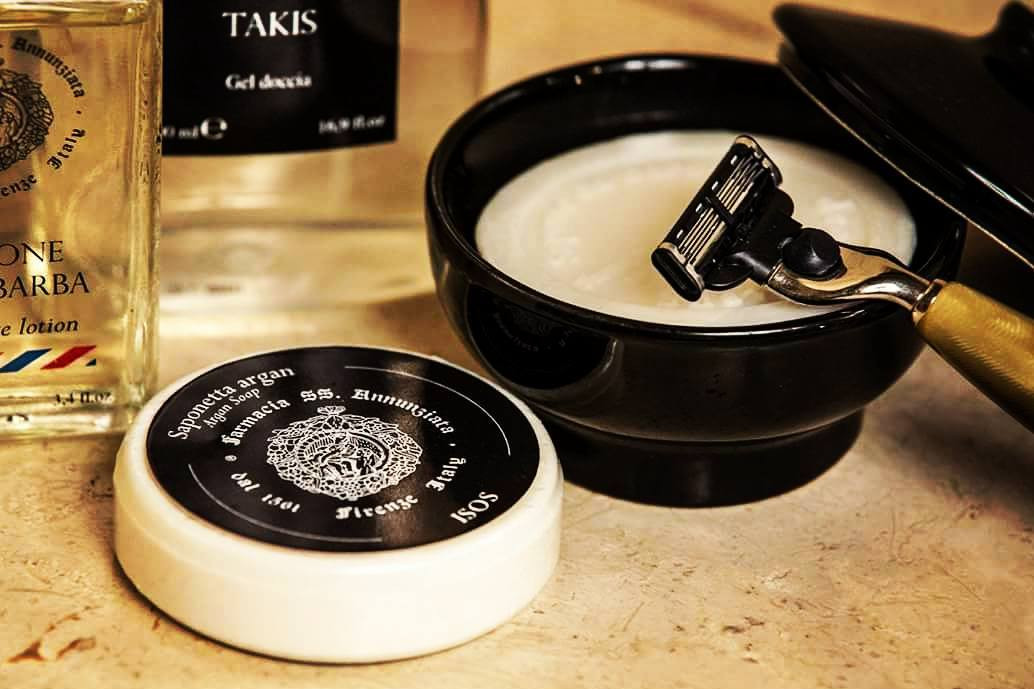
It is very possible that this is the same location where the current pharmacy sits today. Further research on Domenico Brunetti shows that he was registered on 1 Dec 1558 in the Libro rosso delle matricole di Firenze (The red registry book of Florence) for the Arte Medici e Speziali (the medical and apothecary guild) (ASF, Arte dei Medici e Speziali, 12, c. 123v.). Using this information we can reconstruct his story.

After joining the Arte dei Medici e Speziali he opened the chemist’s shop, which sold medicinal herbs and prepared medicines. The shop was located on the second stretch of Via dei Servi, which corresponds to the actual street number of 80r, and was owned by the Monache di S. Niccolò.
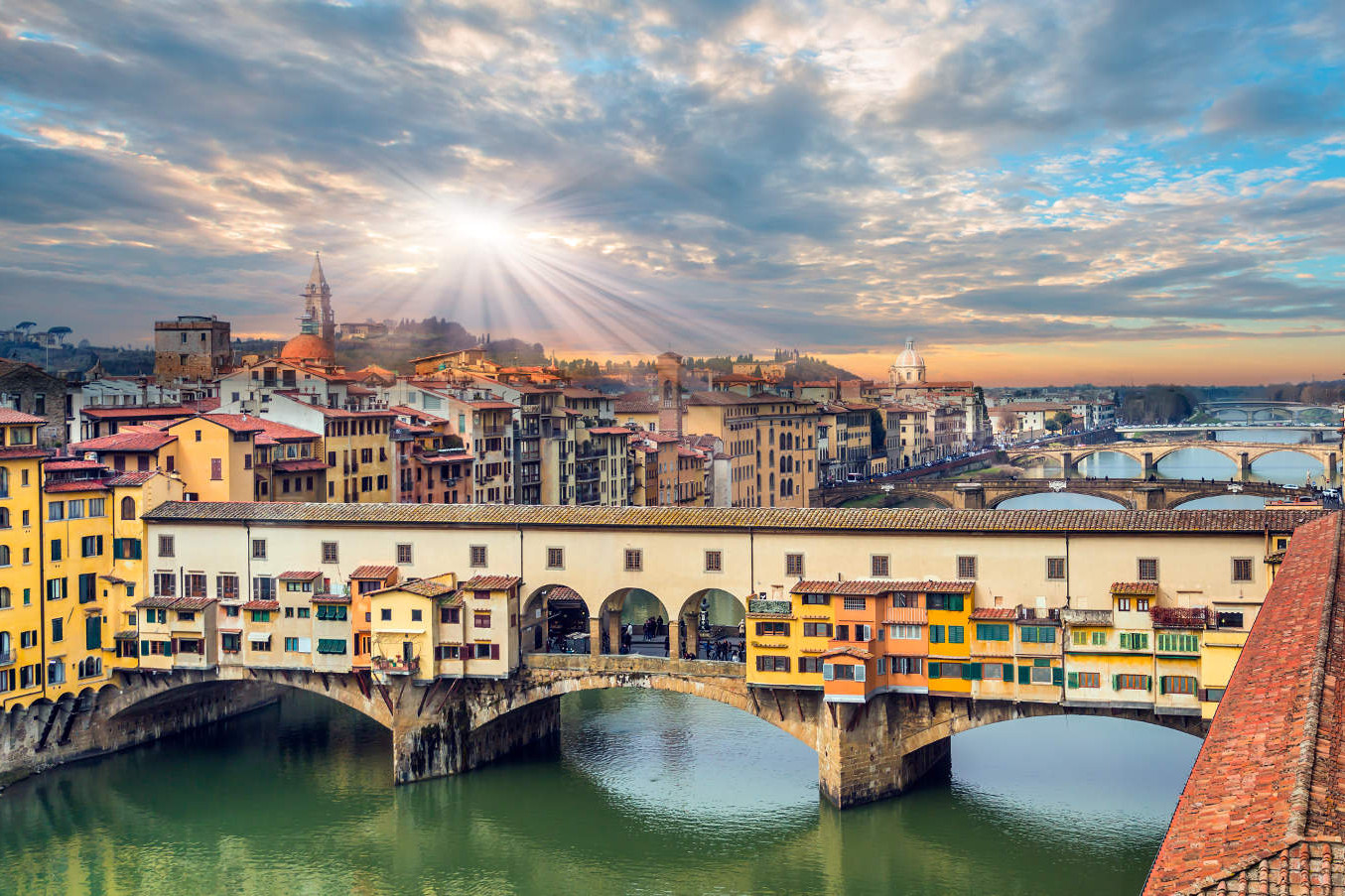
We can therefore identify the Domenico di Vincenzo Brunetti Apothecary as the first known administrator of the Farmacia SS. Annunziata in 1561.
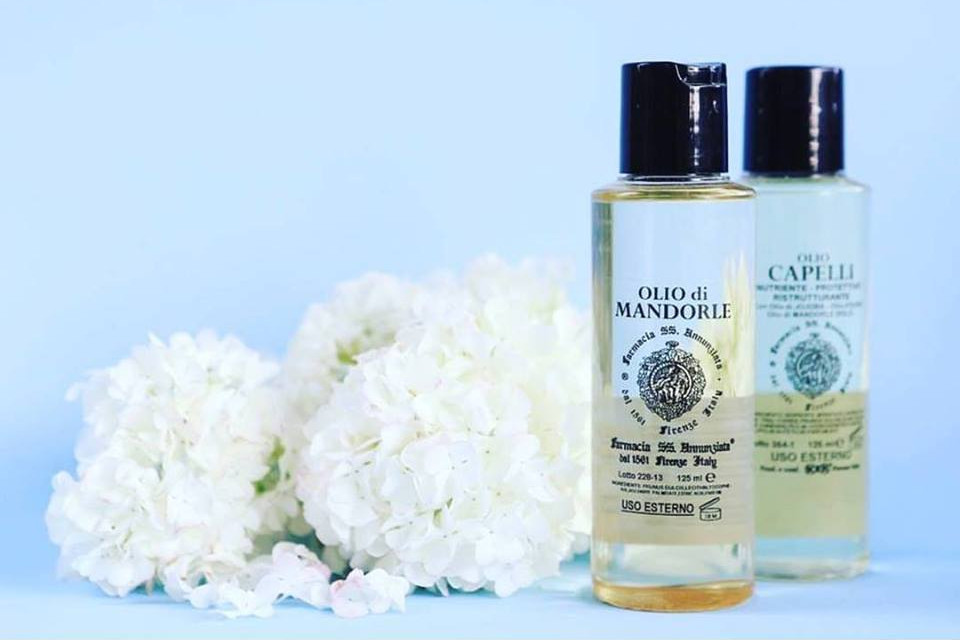
The furniture present in the pharmacy can most likely be traced back to the 18th century along with the insignia affixed to the facade of the building (the round ceramic plate framed in pietra serena with the scene of the Annunciation).
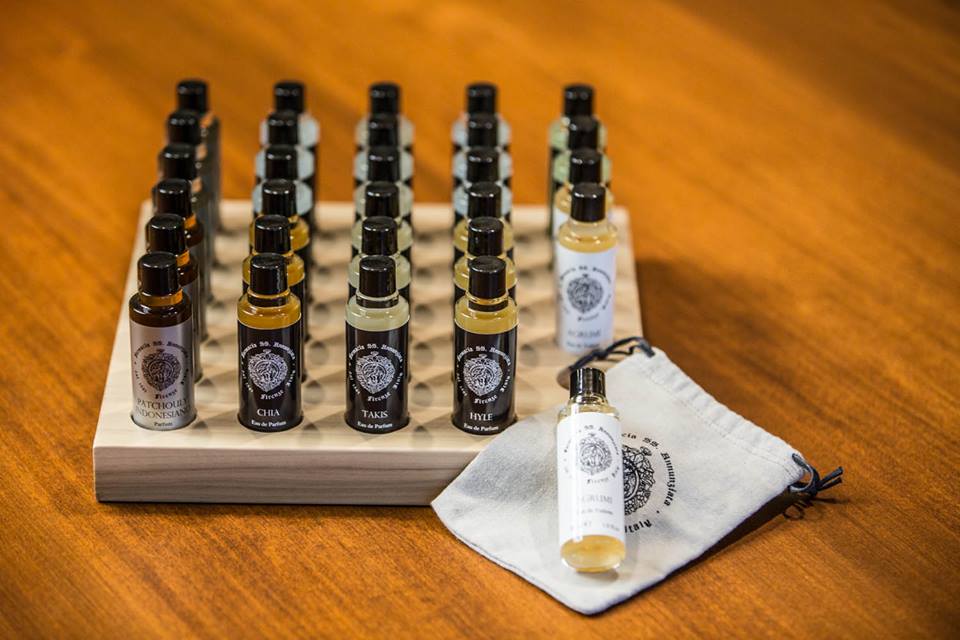
It is from this very symbol that the pharmacy derived its original name, all’insegna della SS. Annunziata (1876). (See photo at left). In 1935 it was renamed Farmacia della SS. Annunziata.
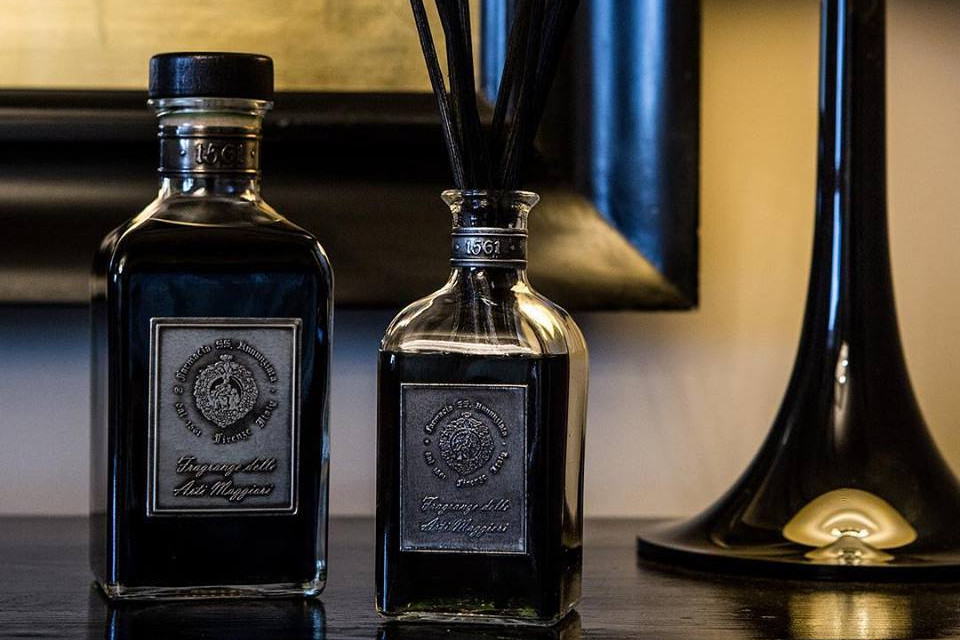
Today the pharmacy is both owned and managed by the Azzerlini family.
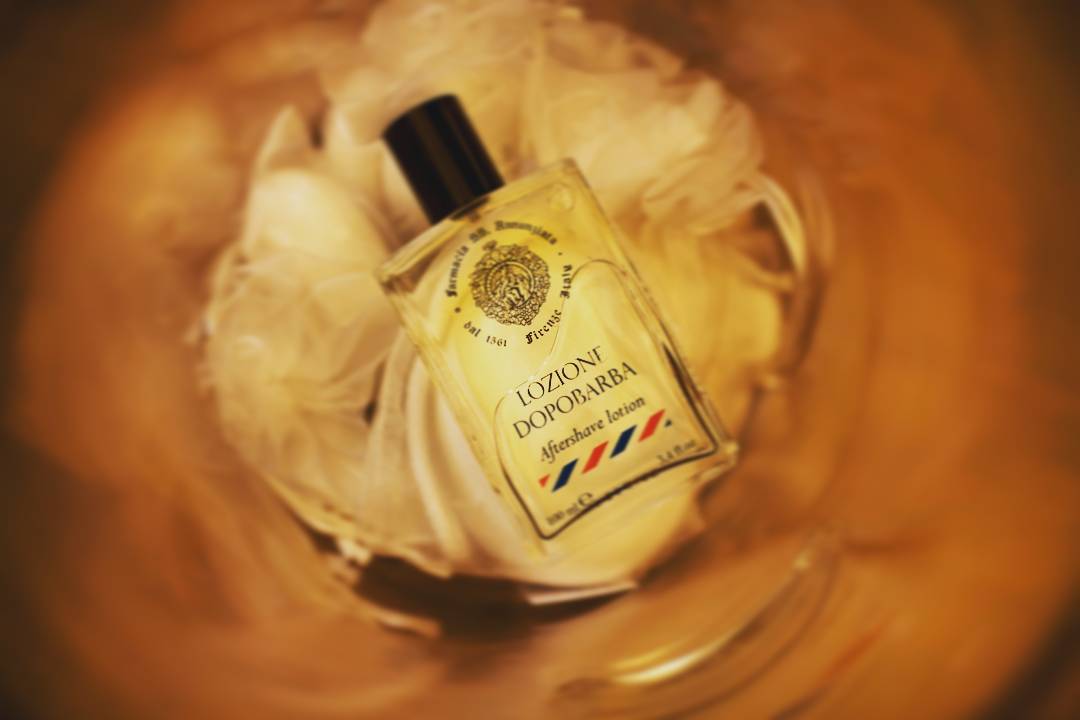
Family
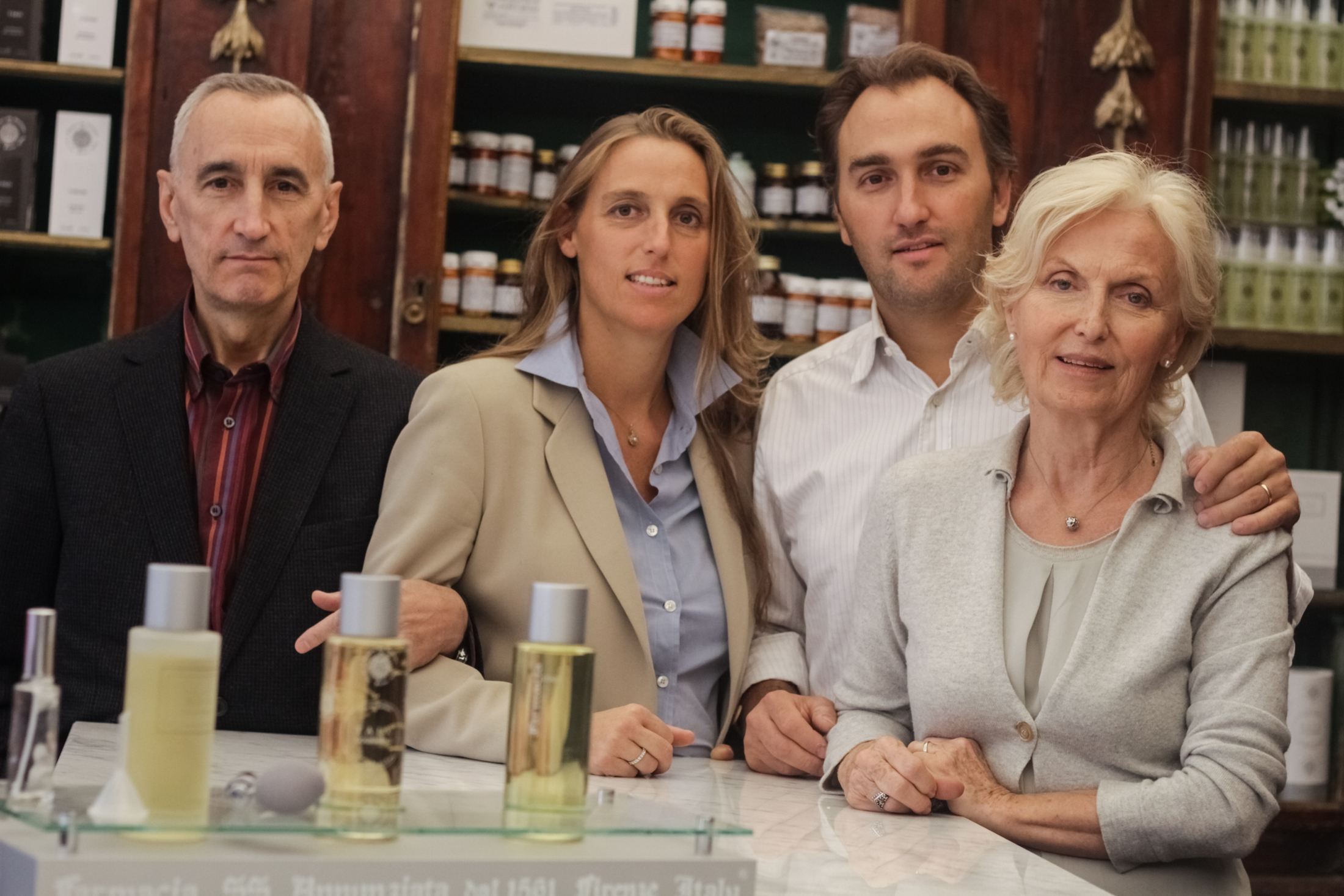
The cosmetic line by Farmacia SS. Annunziata dal 1561 Firenze Italy is produced by KER Srl.

The family is the sole owner of both companies and is composed of two pharmacists and two business executives.

By uniting the long-standing experience of the pharmacy with the modern and reliable technology of KER, we have created a happy union that has brought an efficient and functional quality to our cosmetics. The entire production cycle is under our direct control until final sale to the end client.

None of the old traditions have been lost. None of the benefits of modern technology have been neglected.
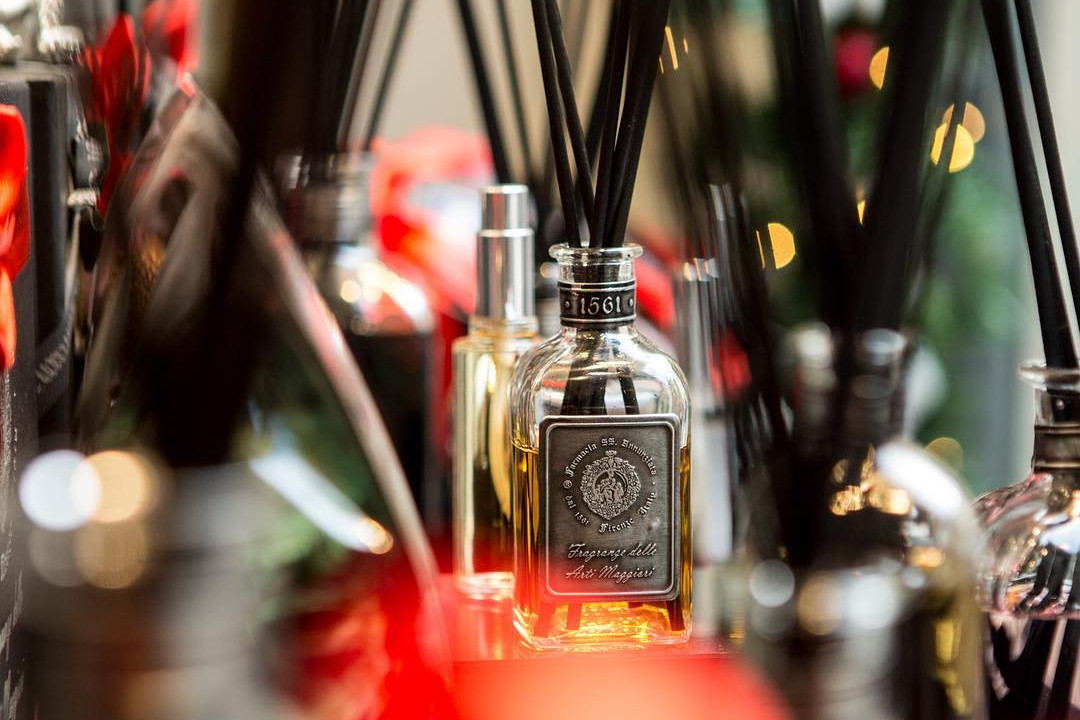
Products Farmacia SS. Annunziata 1561
Farmacia SS. Annunziata 1561
None of The Old Traditions have Been Lost. None of The Benefits of Modern Technology have Been Neglected

Concept

In 1561 the chemist Domenico di Vincenzo di Domenico Brunetti was the first manager of the Santissima Annunziata Pharmacy about whom we have information. (A.S.F. – Decima Granducale 3784 cc. 110v. – 111r A.S.F. – Arte dei Medici e Speziali, 12, c.123v.).

Since that time the Farmacia Santissima Annunziata has always mantained, apart from the usual prestige typical of every pharmacy at that age, a special tradition in preparing galenic prescriptions and products for hygiene and the beauty of the skin.

We have graduated, from ancient processes completely handmade, with pestle and mortar, to special quality controlled preparations made with modern and safe machinery, giving special attention to high standards and throughly researching our prescriptions which are made both with traditional and new raw products.

Our ancient tradition has been mantained and the standards of our products have become, if possible, better and safer.

The Farmacia SS. Annunziata uses only the highest quality ingredients available on the global market and preparation is done with precision using advanced, high-tech machinery. The finished product is always fresh and in accordance with all current technical and legislative standards and the psychophysical needs of the client, as well as the needs of the skin according to the climate and/or seasonal changes, are always carefully considered in the making of both new and old products.

History

The Farmacia SS. Annunziata of Florence is located at Via dei Servi 30 (black) and 80 (red) in a building that dates back to 1400.

At the top of the first story facade is a pietra serena stone sculpture of an eagle bearing a ball on its back. The history of this coat of arms dates back to 1200.Between the twelfth and thirteenth centuries, the Arti di Firenze (Guilds of Florence), which were guilds of arts and crafts, began to take shape.

These were initially created as lay associations for the defence and pursuit of common goals that brought together those who worked in the same profession or those who practised the same trade.

The extraordinary economic developments that permitted Florence to become one of the richest and most powerful cities in medieval Europe are owed in large part to these guilds.

Seven guilds called the Arti Maggiori (Major Guilds) and another fourteen called the Arti Minori (Minor Guilds) were formed.Those belonging to the former managed and administered large interests and were able to create commercial and financial relationships in many parts of the world.

The Arti Minori were guilds of a purely artisan character. Their services were limited to a local sphere and their involvement in politics was generally far more restricted than that of the Arti Maggiori.

One of the richest and most powerful of the Arti Maggiori guilds in Florence was the Arte dei Mercatanti or di Calimala (a guild of cloth finishers and merchants) who had shops in Via Calimala in the centre of Florence, where many of the various guilds’ shops were located.

The Arte dei Mercatanti imported cloth mainly from France and England and then dyed, stretched and fulled it before re-exporting it to other countries.

The Arte dei Mercatanti is represented by a golden eagle against a red background standing upon a white bundle of cloth.

This symbol can be found on the inside of its original building situated on top of a large ball that is hoisted above the stairwell. It is the same coat of arms that is sculpted on the facade of the building where the Farmacia SS. Annunziata is located.

In 1298 the city began to urbanize. It was during this time that a street was formed that went directly to the area in front of the new church that was connected to the SS Annunziata Convent. Today this street is called Via dei Servi.

In 1419, Fillipo Brunelleschi began work on the loggia of the Ospedale degli Innocenti (Hospital of the Innocents) and in 1421 Via dei Servi was paved.

At some point between 1471 and 1482, a map was drawn up by an anonymous connoisseur of Florentine wares and artefacts that clearly shows a two-storey unitary building located between the Annunziata and the Duomo. This building could represent the houses of Via dei Servi and not the original tiratoio (the building for the stretching and drying of cloth). Two-thirds of the original tiratoio was inherited by the Arte della Lana (Guild of Silk), and the Arte dei Mercatanti inherited the remaining one-third.

The tiratoio was eventually demolished by both guilds and it is believed that they may have then built 13 houses (9 and 4, respectively) as evidenced by the positioning of the coat of arms of each guild. The building in which the pharmacy is located is amongst those built by the Arte dei Mercatanti di Calimala, as shown by the coat of arms on the building.

The Decima Granducale of 1561 is the first document that evidences the existence of the 13 houses. This document is a written land registry in which can be found the diligently noted names of owners and tenants along with any existing mortgages etc.

One of the volumes of the Decima, entitled Ricerca delle Botteghe a Firenze dell’anno 1561 (Research of the Florentine Shops from the year 1561), shows that a chemist’s shop existed on the second stretch of Via dei Servi which was the property of the Monache di S. Niccolò (Sisters of Saint Nicholas) and that was managed by the Domenico di Vincenzo Brunetti Apothecary (ASF, Decima Granducale 3784, cc. 110v. – 111r.).

It is very possible that this is the same location where the current pharmacy sits today. Further research on Domenico Brunetti shows that he was registered on 1 Dec 1558 in the Libro rosso delle matricole di Firenze (The red registry book of Florence) for the Arte Medici e Speziali (the medical and apothecary guild) (ASF, Arte dei Medici e Speziali, 12, c. 123v.). Using this information we can reconstruct his story.

After joining the Arte dei Medici e Speziali he opened the chemist’s shop, which sold medicinal herbs and prepared medicines. The shop was located on the second stretch of Via dei Servi, which corresponds to the actual street number of 80r, and was owned by the Monache di S. Niccolò.

We can therefore identify the Domenico di Vincenzo Brunetti Apothecary as the first known administrator of the Farmacia SS. Annunziata in 1561.

The furniture present in the pharmacy can most likely be traced back to the 18th century along with the insignia affixed to the facade of the building (the round ceramic plate framed in pietra serena with the scene of the Annunciation).

It is from this very symbol that the pharmacy derived its original name, all’insegna della SS. Annunziata (1876). (See photo at left). In 1935 it was renamed Farmacia della SS. Annunziata.

Today the pharmacy is both owned and managed by the Azzerlini family.

Family

The cosmetic line by Farmacia SS. Annunziata dal 1561 Firenze Italy is produced by KER Srl.

The family is the sole owner of both companies and is composed of two pharmacists and two business executives.

By uniting the long-standing experience of the pharmacy with the modern and reliable technology of KER, we have created a happy union that has brought an efficient and functional quality to our cosmetics. The entire production cycle is under our direct control until final sale to the end client.

None of the old traditions have been lost. None of the benefits of modern technology have been neglected.

Products Farmacia SS. Annunziata 1561
-
Farmacia SS. Annunziata 1561 - Cream with Propolis - Face Cream - Ancient...
Cream with propolis. Face moisturizer with Propolis, Echinacea and Marigold for acne-prone and impure skin. Delivers a deep antibacterial action.
50,50 € -
Farmacia SS. Annunziata 1561 - Couperose Cream SPF15 - Face Cream - Ancient...
Couperose cream SPF15. Day face cream that helps stimulate microcirculation and treats cutaneous alterations such as redness and couperose.
50,50 € -
Farmacia SS. Annunziata 1561 - Sebum-Regulating Lotion - Face Cream - Ancient...
Sebum-regulating lotion. Light face lotion that delivers a sebum-normalizing and moisturizing effect to combination, oily, and shiny skin.
46,50 € -
Farmacia SS. Annunziata 1561 - Exfoliating Gel with Marigold - Face Scrub -...
Exfoliating gel with marigold. Face scrub that exfoliates skin, unclogs pores, removes dead cells and impurities. Restores skin brightness and smoothness.
23,50 € -
Farmacia SS. Annunziata 1561 - Revitalizing Mask - Face Mask - Ancient...
Revitalizing mask. Face mask suitable for dehydrated, dull and stressed skin. Provides immediate comfort and relief thanks to its silky texture.
56,00 € -
Farmacia SS. Annunziata 1561 - Lip Cream with Propolis SPF50 - Lip Cream -...
Moisturizes and repairs dry, chapped and irritation-prone lips, protecting from harmful environmental agents, especially UV rays. Thanks to Propolis extract, this treatment delivers a healing, softening and decongestant effect. Ideal for outdoor people. Summer and winter protection.
16,00 € -
Farmacia SS. Annunziata 1561 - Lip Balm with Almond Oil - Lip Balm - Ancient...
Moisturizing and emollient lip balm enriched with Almond Oil. Nourishes lips, leaving them soft and plump. Perfect for dry and chapped lips.
10,50 € -
Farmacia SS. Annunziata 1561 - Lip Balm with Jojoba Oil - Lip Balm - Ancient...
Nourishing and softening lip treatment enriched with Jojoba Oil. Protects and hydrates lips leaving them smooth and moisturized. Perfect for delicate and chapped lips.
10,50 € -
Farmacia SS. Annunziata 1561 - Whitening Toothpaste with Sage - Whitening...
Dental toothpaste, specially designed to protect the health and beauty of your smile and ensure effective and thorough daily oral hygiene and achieve a pleasant sensation of freshness.
19,00 € -
Farmacia SS. Annunziata 1561 - Natural Bamboo Toothbrush, Medium White...
Natural Bamboo Toothbrush.Medium white bristle.
9,50 € -
Farmacia SS. Annunziata 1561 - Natural Bamboo Toothbrush, Soft Black Bristle...
Natural Bamboo Toothbrush.Soft black bristle.
9,50 € -
Farmacia SS. Annunziata 1561 - Shower Gel with Marigold - Body Wash - Ancient...
Shower gel with marigold. Body wash for all skin types, especially sensitive and dehydrated ones. Restores shine and softness, leaving skin scented.
25,50 € -
Farmacia SS. Annunziata 1561 - Shower Gel with Tuscan Lavender - Body Wash -...
Shower gel with tuscan lavender. Body wash for all skin types, especially irritated ones. De-stresses skin thanks to its soothing and relaxing properties.
25,50 € -
Farmacia SS. Annunziata 1561 - Intimate Hygiene Cleanser - Intimate Wash -...
Intimate hygiene cleanser. Intimate wash recommended for daily intimate hygiene. Respects skin PH and prevents bacterial flora alterations.
27,50 € -
Farmacia SS. Annunziata 1561 - Cellulite Cream - Body Lotion - Ancient...
Cellulite cream. Anti-cellulite body lotion that fights water retention and reduces cottage-cheese skin. Gives skin a more elastic and toned-up look.
63,00 € -
Farmacia SS. Annunziata 1561 - Insect Repellent - Body and Room Spray -...
Insect repellent. Body and room spray that keeps mosquitos and bugs away. With Lemongrass, Lavender and Geranium extracts. Also suitable for children.
23,50 € -
Farmacia SS. Annunziata 1561 - Moisturizing Lotion - Body Lotion - Ancient...
Moisturizing lotion. Body lotion enriched with Elastin, Shea Butter and Green Tea. Provides deep hydration and strengthens skin structure.
47,50 € -
Farmacia SS. Annunziata 1561 - Firming Lotion - Body Lotion - Ancient...
Firming lotion. Body lotion that fights loose and sagging skin. The combination of Elastin and Collagen visibly restores elasticity and density.
47,50 € -
Farmacia SS. Annunziata 1561 - Argan Oil - Oil for Body, Face, Hair - Ancient...
Argan oil. Vegetable oil for body, face and hair with stunning antioxidant and regenerative properties. Restores skin firmness and elasticity.
36,00 € -
Farmacia SS. Annunziata 1561 - Sweet Almond Oil - Oil for Body, Face, Hair -...
Sweet almond oil. Vegetable oil for body, face and hair. Well known for its soothing properties, it nourishes skin leaving it soft and velvety.
25,50 € -
Farmacia SS. Annunziata 1561 - Hand Cream with Hyaluronic Acid - Hand Cream -...
Hand cream with hyaluronic acid. Fast-absorbing soft cream for cracked and dry hands. Repairs, moisturizes and regenerates damaged skin.
25,50 €



